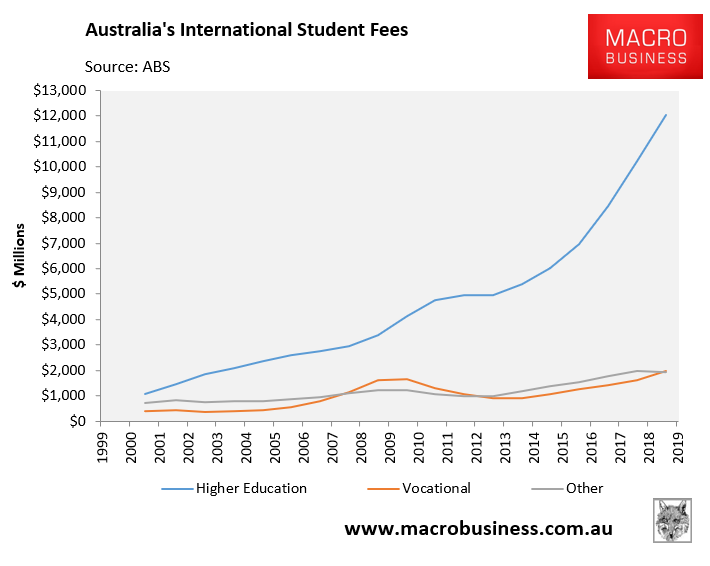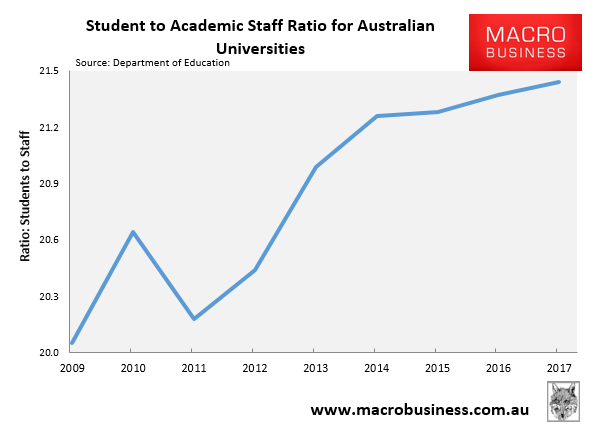The Times Higher Education World University Rankings indicate the Australian National University (ANU) is the only Australian university with a student to staff ratio of under 20 at 17.8.
Professor William Locke from the Melbourne Centre for Higher Education at the University of Melbourne notes that Melbourne is one of five Australian universities that has rated well in global rankings in recent years, with the others being Sydney, University of New South Wales, Monash, and Queensland. However, the five have not lifted their staff numbers proportionately to rising student numbers.
Professor Locke also warns that falling enrolments from international students because of COVID-19 could force universities to make redundancies, thereby further increasing student to staff ratios and making them less attractive to overseas students:
From The AFR:
“There’s a lot more pressure on staff. This emergency shift to online learning has fallen on staff who often have no secure contracts.
“It raises the question as to what’s the impact on teaching quality of a high student to staff ratio.”
“And with the big hit to international student fees universities are likely to make redundancies. The student-staff ratio could rise further.”
As shown in the next chart, Australia’s universities raked in a whopping $44 billion of tuition fees from international students in the five years to 2019:

However, they spent the lion’s share of this windfall on padding their administrations (bureaucracies), rather than increasing their academic staff. This is illustrated in the below table derived from Department of Education data:

Accordingly, the ratio of students to academic staff at Australia’s universities has materially worsened, increasing from 20.05 in 2009 to 21.44 in 2017:

The true situation is likely worse than the data suggests, given the explosion in international student numbers. Most of these international students are from Non-English Speaking Backgrounds (NESB) and many have poor English-language skills. Thus, they are likely to be higher maintenance than domestic students and require more intense teaching effort.
Viewed in this light, the rise in student to teaching staff ratios is doubly worrying, indicating a severe degradation of quality.
Domestic students have also been forced to carry NESB students through group assignments.
The sad reality is that Australia’s university system has become commercialised and focused on maximising revenue over teaching quality. It has shifted focus from higher learning to higher earning.
Front-line university staff have been gutted and standards trashed, while senior administrators pay themselves obscene salaries.
Running low-quality degree factories was never in the national interest.

